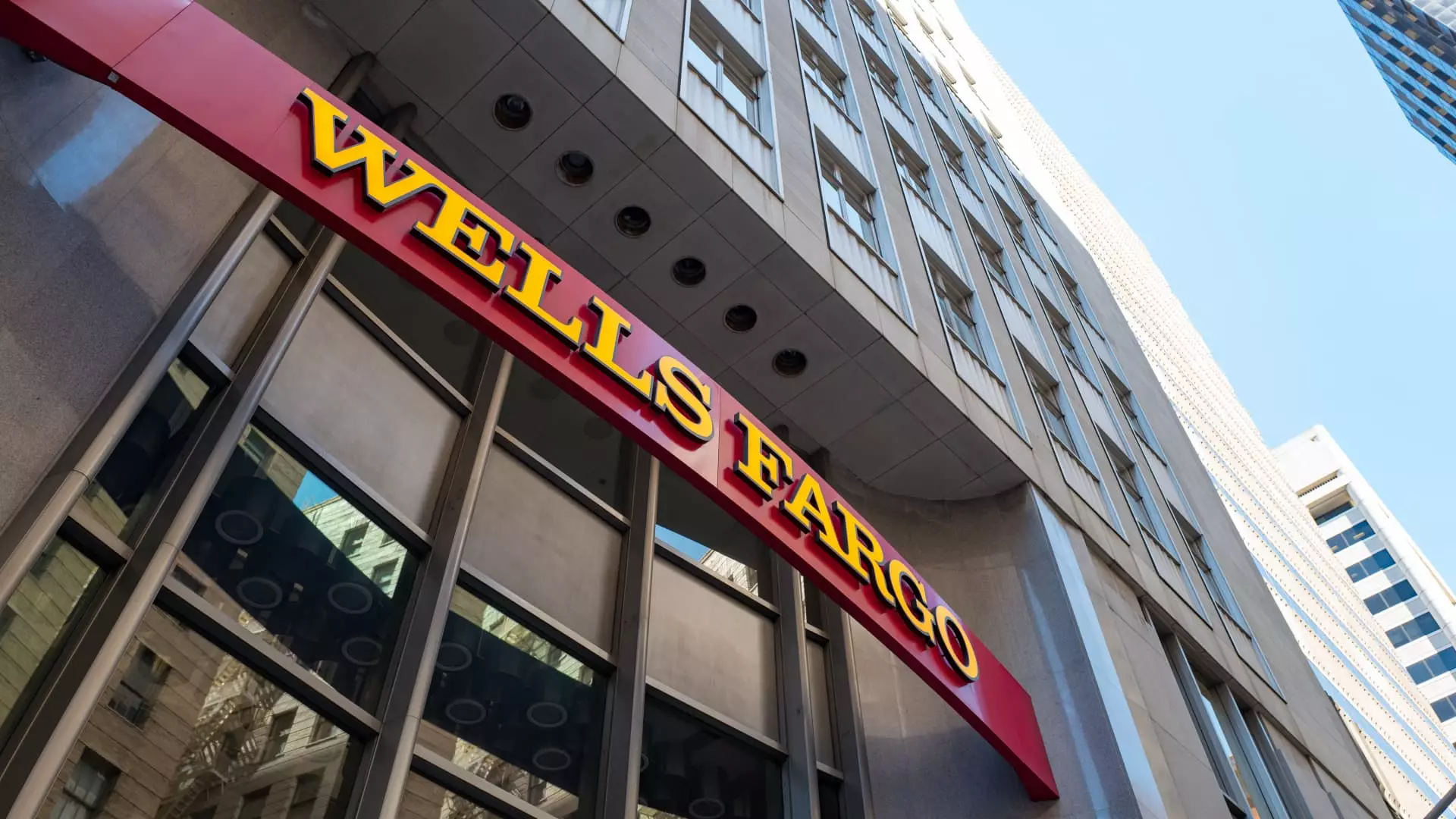Wells Fargo’s recent earnings report for the fourth quarter has sent positive ripples through the market, showcasing the bank’s ongoing recovery under the leadership of CEO Charlie Scharf. The earnings report revealed adjusted earnings per share (EPS) of $1.58, surpassing analysts’ expectations of $1.35, according to LSEG. However, while this figure acknowledges Wells Fargo’s ability to generate profit beyond expectations, it is essential to note that total revenue for the quarter amounted to $20.38 billion, which fell short of expectations set at $20.59 billion. This discrepancy indicates lingering challenges despite the apparent bullish sentiment surrounding the bank’s performance.
The reported GAAP EPS stood at $1.43, which was influenced by several non-recurring items, creating a nuanced picture of Wells Fargo’s financial health. A notable factor in this quarter’s performance was a circumstantial 15-cent impact on adjusted earnings due to severance costs. As analysts scrutinize these results, the key takeaway is the emphasis placed on Wells Fargo’s adjusted earnings, which could be perceived as a measure of sustainable profitability amidst corporate restructuring and challenges in other income areas.
Following the earnings announcement, Wells Fargo’s stock saw an uptick of over 7%, trading above $76 per share, with a closing high noted at $77.35 the previous month. This rebound aligns with a broader investor sentiment that appears willing to overlook minor disappointments in revenue as they anticipate future growth. As the bank’s stock price reflects, investors seem to favor Scharf’s strategic initiatives aimed at reforming the bank and enhancing operational efficiency.
Year-to-date, Wells Fargo has gained about 7% after an impressive rise of almost 43% in the previous year, suggesting a significantly positive market outlook. Analysts have responded to the earnings beat and an optimistic 2025 forecast by raising the stock’s price target from $80 to $84—a clear indicator of confidence in the bank’s trajectory going forward.
Scharf has been at the helm of a transformative phase for Wells Fargo, focusing on rectifying the bank’s past missteps and aiming for a more stable and diversified business model. His strategy has included operational streamlining, cost reduction, and expanding non-interest income—a crucial leverage point as the bank works to diminish its reliance on net interest income (NII).
Despite the reported earnings showing some sluggishness in fee-based revenue growth, the overarching plan to boost returns on tangible common equity (ROTCE) remains on course. A reported ROTCE of 13.4% for 2024 is a stepping stone toward achieving the ambitious goal of 15%. Moreover, Scharf’s ongoing efforts to lift the Federal Reserve’s asset cap of $1.95 trillion have the potential impact to unlock further financial maneuverability and growth opportunities for Wells Fargo.
While the fourth quarter revealed some areas for concern, particularly regarding a slight decline in NII, Wells Fargo’s guidance for 2025 is encouraging. Management anticipates a stabilization and potential increase in NII, positing a modest growth range of 1% to 3%. The early indicators suggest an upcoming upswing, which could bring NII close to approximately $48.65 billion—significantly surpassing analyst forecasts that predict a decrease.
Furthermore, Wells Fargo’s efforts to manage operational expenses are noteworthy. The bank has outlined a proactive expense management plan, projecting total operational costs slightly declining from $54.6 billion in 2024 to approximately $54.2 billion in 2025. This foresight not only reflects responsible financial management but also indicates confidence in achieving sustained revenue growth to offset anticipated increases in certain operational expenses.
Wells Fargo’s latest earnings report showcases a juxtaposition of quantifiable success in earnings against a backdrop of miss in revenue expectations. However, the bank’s upbeat outlook for 2025 suggests that it is positioning itself to embrace future growth and stability. Investors have responded favorably to the results, buoyed by the assertive actions being undertaken by Scharf to reshape the institution’s foundation.
While the path is not without its challenges, Wells Fargo is demonstrating resilience, fostering trust not only within the market but also among stakeholders looking for long-term viability and success. The strategic vision of Wells Fargo highlights a dedication to recovery and innovation, promising to transform the bank into a more competitive player in the financial services sector as it gears up for a new phase of growth.

